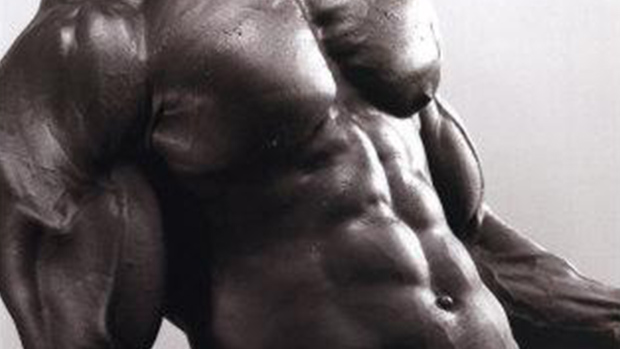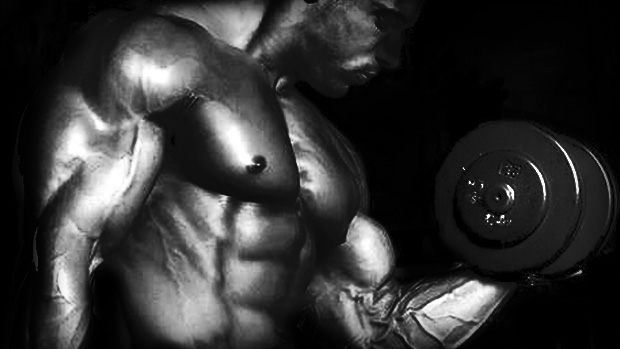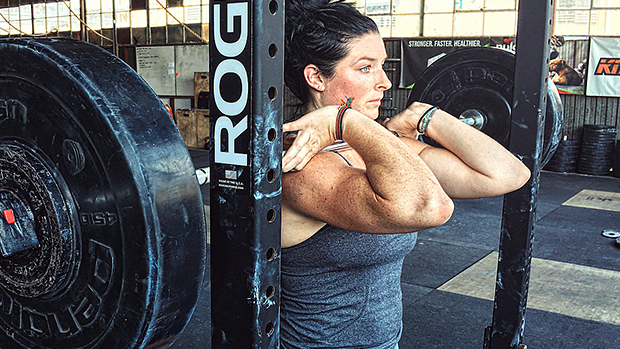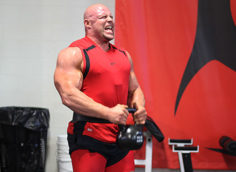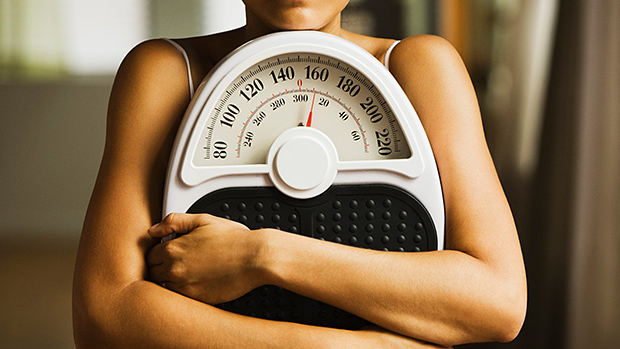What's worse? Having the knowledge to advance in a given
field and incorrectly applying it, or just ridiculing that field
and causing confusion? About the last time physique information was
popular, scientific, not considered narcissistic, and most
importantly, practical, was when Steve Reeves was rocking the cloth
as Hercules.
 |
Whatever you call it – bodybuilding, body recomposition, or
trying to look good naked – physique training carries a bad
reputation in the strength training world today. Like most other
things in our fitness/strength community, there only exist two
extremes and very little substance in the middle.
In one corner you have people who actually train for a living
and these are generally bodybuilders. Some are using
performance-enhancing drugs; others have no clue and train like
those using performance-enhancing drugs.
Across the ring, you have the strength coaches – some highly
educated and some not – who loathe pure "looks" driven training
and either proclaim it foolish or dispense unrealistic training
concepts. The result is a beatin' to anything physique
related.
The end results is we've lost practicality; we make
everything too complex. Let's see if we can change that. It's
time for a new challenger to step into the ring and drop some
knowledge bombs for every natural lifter who wants to "look good."
We'll take a look at both the training and nutrition sides of the
coin.
Finding the Optimal Training Split
This is probably the hottest running debate in the
bodybuilding-based community. Which training split works best?
Traditionally, most bodybuilders, either enhanced or not, will
go with the typical body part split. Each muscle is hit once a week
to the point of fatigue since it has six days to recover. This
method of thinking is what got the physique community into hot
water. Most anti-physique people will point to the fact that no
muscle works in isolation and we should train whole body movements.
I'm sure you've heard it before.
In short, there's more than one way to get the job done.
Body part splits aren't necessarily bad. They suck if a
40-year-old woman who has three hours per week to train is
performing them, but for certain populations they have great
merit.
Trying to increase muscular size and definition isn't
mutually exclusive to body part splits. Knowing that the three
characteristics to muscle growth are volume, intensity, and
frequency, we see that each split has its own advantages and
disadvantages. Let's take a look at them:
Body Part Splits, Once a Week
Pros
Highest amount of recovery
Potentially least CNS
fatiguing
Highest volume per body part
Lower amount of calorie usage
Cons
Infrequent muscle stimulation
Inability to use greatest total load per session
Least amount of total muscle recruitment per session
Body Part Splits, Twice a Week
Pros
More frequent muscle
stimulation
Greatest total volume per body part
Lack of full
recovery
Cons
Greater likelihood
of adrenal fatigue
Potential for wasted energy
Inability to use greatest total load
Total Body Training
Pros
Frequent muscle stimulation
Ability to use more total
muscle
Ability to use greater total
loads
Cons
Inability to significantly improve a specific
movement
May
leave specific body parts
under-stimulated
Impaired recovery
Upper/Lower Split
Pros
Increased focus on specific
areas
Good mix of frequency and
intensity
Ability to significantly increase lifts
Ability to focus on weak areas
Cons
Lack of significant volume
Potential impaired recovery
Upper/Lower Split with Body Part Training
Pros
Appropriate mix of volume, frequency, and
intensity
Mix of recovery and lack of recovery
Ability to increase lifts while focusing on specific
weaknesses
Cons
Increased risk of fatigue if training isn't monitored
correctly
Increased likelihood of wasted exercises on body part
days
As you can see, each split has positives and negatives. One
isn't better than the other and each split is appropriate at
certain times. Breaking each split down according to volume,
intensity, and frequency categories produces the
following:
Volume Splits:
Body part splits once a week
Body part splits twice a week
Total body training
Upper/lower split with body part training.
Intensity Splits:
Upper/lower splits
Upper/lower splits with body part training
Frequency Splits:
Body part splits twice a week
Total body training
Upper/lower splits with body part training
Looking at the breakdown, only one method falls into each
category: upper/lower splits with body part training. This method
not only allows us to focus on increasing specific lifts, but also
on direct work for the areas that we need to improve. In short, we
have increased volume with proper intensity and frequent muscle
stimulation.
Natural Nutrition Strategies
How can we have stoneage nutritional strategies for physique
sport? It's hard to believe that there are still high profile
coaches recommending "bulking" and "cutting" cycles. (You can learn
all of the disadvantages of this by reading Christian
Thibaudeau's article, "The Truth About
Bulking" in the T-Nation archives.)
If you're a natural, there's no way you're getting the
advantages of these methods since you obviously aren't taking
the drugs that cause you to lean out substantially without dropping
muscle mass. To relate to the non-competing community, who really
wants to train hard all winter for five pounds of lean muscle mass
just to lose it when they diet for the beach in the
summer?
The biggest issue facing most people is that they want to "add
muscle and lose fat at the same time." This is wishful thinking.
Without a direct focus, our energy is going to be split and
we'll end up going toward both goals half-ass.
Unless they work at home and have no social life, most people
don't want to get a gut while trying to add size. The best
plan for natural lifters is to use a cycling approach consisting of
high, medium, and low days of carbohydrate consumption. Varying
carbohydrate amounts all year allows us to stay lean, full, strong,
energetic, and most importantly, we never have to go crazy when it
comes to adding size or dropping fat.
 |
Our main aim here is to have total control over the hormone
insulin and its powerful physique altering effects. Insulin is a
storage hormone. We have to realize that it can be a storage
messenger for both fat and carbohydrates and is very
anti-catabolic. To gain size, we need to have insulin elevated
throughout the day since it'll allow a higher percentage of the
protein we consume to go toward building muscle. In this sense,
carbohydrates are very protein sparing.
The mistake most individuals make is they keep their protein
levels on par with their carb levels when they diet. We simply have
no need for a high carb intake during a high protein diet, as the
chances of us fully using our protein is greater.
This is all well and good, but insulin also decreases our SHBG
or steroid hormone binding globulin, which is responsible for our
Testosterone production and making it inactive. It's not the amount
of total Testosterone that matters, but freeTestosterone
that results in physique changes. Essentially, we reach a point of
too much of a good thing. We're now beginning to store fat, which
brings us to the low carb aspect of the diet.
Depleting our body of glycogen and increasing our protein along
with healthy fatty acids, like the ones found in Biotest's
Flameout,
will keep our insulin levels lower throughout the course of the
day.
Carb intake is kept lower and is ingested around training time,
which also allows a higher carb intake to fill our glycogen stores
and give us the appearance of rapid muscle size
increases.
Adding a high amount of good fat increases our sex hormone
production and "unlocks" our free Testosterone for our higher carb
days. Protein intake is obviously raised since our insulin levels
are lower and we need more available protein for new muscle tissue
and to be used for energy.
This entire process continually keeps our insulin levels
relatively sensitive and creates a more favorable environment for
our nutrients to be stored where we'd like them to be. Our
metabolism will be through the roof and we'll be continually adding
size and dropping body fat on an almost minute-to-minute
basis.
The better we can store nutrients, the leaner and bigger
we'll be. To best achieve this, we need to frequently
alternate our carbohydrate intake to maintain a high level of
insulin sensitivity. Here's an example:
Day 1: Upper Body, High Carbs
Day 2: Lower Body, Medium Carbs
Day 3: Off, Low Carbs
Day 4: Arms, Medium Carbs
Day 5: Chest/Back/Lateral Shoulder, Medium Carbs
Day 6: Legs, High Carbs
Day 7: Off, Low Carbs
Training Methods
Training is pretty simple when you think about it – continually
do more than you did the last time and grow. It really is that
easy. Training is systematic and should be viewed in cycles where
advancement is planned, not just an accident. These are the three
methods I use most frequently to "force"
advancement.
1) Sequential Development
This is more of a periodization model than an actual training
method, but it nonetheless applies to natural lifters.
According to Soviet scientist Y.V. Verkhoshanskly, an
individual's body adapts better if it's presented with a more
focused, narrow, and limited training objective rather than
numerous conflicting requests. We're taught to achieve an ideal
body by alternating our set/rep ranges accordingly – higher sets
for lower reps and vice versa.
We're essentially teaching ourselves to focus on one goal, one
day. That's not to say we can't use lower or higher reps
the next day, but we have to realize that our focus must stay on
the current strength quality to bring that specific adaptation. Is
it any wonder why the Soviets dropped pyramid training around the
1960's?
2) 5% Progression
I love the 5% progression method. It's like a built-in
progression strategy that requires no thinking. This method focuses
on improving hypertrophy through a narrow rep range. I prefer a
3-rep bracket, such as 6-8 or 8-10 reps. The premise is that it
requires the individual to increase the amount of resistance by 5%
each workout, while at the same time performing one fewer rep per
workout.
This method can be used for three to six weeks. After the third
week, reduce the weight by 5% but bring the reps back to the
original starting point. Use the weight of workout #2 for the rep
target of workout #1: 4-5 sets of 6 reps at 105 pounds (assuming
our hypothetical starting weight was 100 pounds)..
Natural trainees have no choice but to grow using this method
since they require their body to continually adapt to a greater
stress via the continuous load increase, yet gradually reduce the
volume to prime themselves for the fourth week where they make a
five pound gain. In the grand scheme of things, a 5-10 pound
increase over six weeks is huge for a natural
trainee.
 |
3) Progressive Partial Range of Motion
Strength is very joint angle specific. We can produce
substantially more force in a half squat than we can in a full
squat. The trouble begins when we seem to think that it's the only
way to train.
Think about the "Westside" method of training for a second.
Bands and chains were instituted to enhance the resistance at the
bottom or top of the movement since we're less effective at these
points. Now think back to a time in your training career where you
used partials in your program, either on purpose or not. I bet you
saw some pretty rapid size increases. It didn't do much for
strength through the whole movement, but the size was
cool.
That's exactly what we're after here. Partial range of
motion movements have anywhere from a 5-15% carryover in joint
movement. This should be used to our advantage by progressively
performing longer and longer partial movements to the point that
we're at a full range of motion.
When you take a natural athlete seeking size and expect him to
not only increase strength but also do so with a steady volume,
something has to give. He's just not going to be able to
repeatedly produce force over and over again without incurring more
fatigue or joint injury. Increasing the range of motion slightly
each set allows the trainee to slowly increase joint stability
while concurrently enhancing motor unit recruitment by teaching
himself to use a heavier load than normal for that joint angle.
To be honest, I think partials are, at times, better for
size.
Recovering Naturally
The absolute greatest challenge facing a natural lifter is
recovery. Remember, we are what we recover from, and training is
actually damaging to our growth specific hormones.
Most people's kitchen cabinets resemble the local supplement
store and all the gym talk is on the latest new plasma expander or
whatever. Forget about that stuff for now and concentrate on
recovery supplements. Our main focus should be on pre, during, and
post-training nutrition. So, think about a properly formulated
post-workout drink such as Surge around the workout sessions and BCAAs and creatine taken before,
during, and after training.
Wrap-Up
As natural trainers we need to continually remind ourselves that
we have to be practical with our program design and focus on other
factors outside of the training session. Get it done and you'll
grow, naturally!

